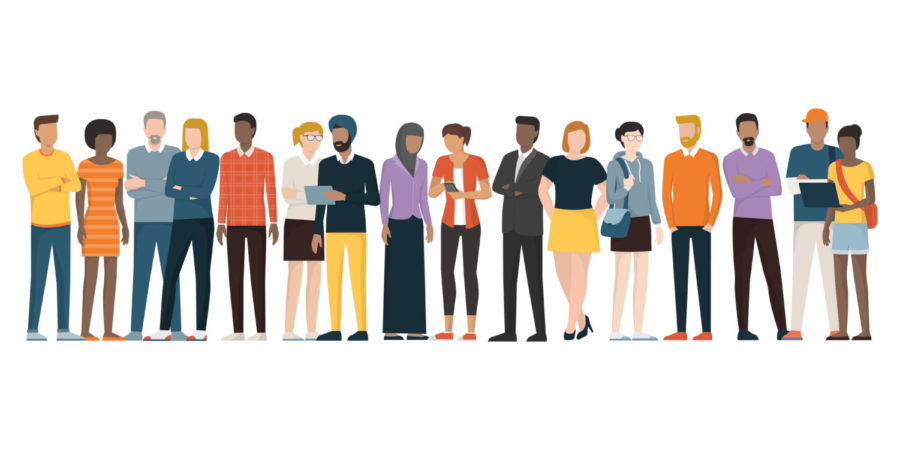Suza: Self-reflection strengthens diversity and inclusion
February 17, 2021
There will be progress. Like after the Obama administration’s effort to make college more affordable and accessible to low-income students and students of color.
There will be setbacks. Like after Trump’s executive order threatened diversity training in U.S. colleges.
The impact of such external factors is hard to miss. Yet it’s internal factors that can escape our attention because they’re deeply ingrained in our “normal” way of operating.
Imagine a stellar high school student with a dream of attending her favorite university, which is predominantly white. The aspiring student visits the university and hears more about various great programs and activities. The visit seals the deal.
The student enrolls as an undeclared major.
A class in philosophy introduces the student to George Berkeley, who tried to put God in the center of philosophy, and Immanuel Kant, who believed that moral principles must be followed unconditionally.
Martin Heidegger also captures the student’s attention with his idea that: “We do not experience mere sensations abstracted from the real objects of the world; rather, our experiences are of everyday objects in all their richness and complexity.”
From Heidegger’s thinking, the student recognizes that there’s complexity in our humanness, and richness in our cultures, backgrounds and experiences.
Yet upon looking around the department, the student sees more vividly that the department is homogeneously white. The student wonders: How can I experience the richness and complexity of a professor of color if I don’t interact with such a professor?
The student looks white and also is Jewish, and upon further research she learns that Heidegger was supportive of the Nazis. The student wonders: Why was this not mentioned in class?
Unfortunately, what was also left out in the discussion was the fact that modern philosophy has ties to racism and bigotry. Upon this realization, the student decides to take a course in genetics.
In genetics she learns about the amazing work of James Watson and Francis Crick to unravel the structure of the genetic code. The student is elated that knowledge of the genetic code made it possible to create the COVID-19 mRNA vaccine.
Upon further research the student finds out that Watson and Crick relied on the work of a female scientist, Rosalind Franklin, yet Franklin wasn’t considered for the Nobel Prize. Another student who’s Black shares that Watson was stripped of his numerous accolades because of his racist views against Black people. The students wonder: Why were these things not acknowledged in class?
In the genetics class, the students read research papers on bone development and biological networks and are upset to discover that the terms “master” and “slave” are used with impunity in biology and computer science.
The Black student raises more concern about the term “breeding” used in crop and animal science. The term “breeding” reminds the students of a dark past in America involving the creation of slave breeding farms to supply Black slaves to plantations. The students wonder: Why is the term “breeding” still used to describe improvement of the genetics of animals and crop plants?
The students browse the internet and learn that in French, Spanish and Portuguese languages, the term “breeding” is not used, instead, the term “improvement” of plants is used.
The students meet at a coffee shop with other concerned students to discuss the use of offensive terms in courses. They also discuss circulation of hate speech on social media.
A student from journalism warns the group that controversial social media posts are protected by the First Amendment. The Black and Jewish students are appalled by this and ask: How about the protection of those affected by hate speech?
A professor in agronomy who happens to be at the coffee shop overhears the conversation and approaches the students and says:
I am sorry for the hurtful experiences you have endured in our institution. I have also been complicit in this. I was educated and I’m working in the area we call plant breeding. I also use the term “breeding” in my teaching and research. Now I see better and I want to do something about this. I am sorry for perpetuating the pain.
The Black student turns to the professor and says: Imagine having a guest in our home. If we are good hosts, we would prepare a room for our guest, we would make sure our guest has food to eat, we would spend time with our guest, we would show that we’re interested in their well-being, we would make sure our guest feels safe in our home.
There is a lot of work to be done in academic institutions such as this one to make the learning environment safe.
The work starts at the individual level.
First by imagining being in the underrepresented and having to deal with racism. This will help us become aware of beliefs and stereotypes about those different from us.
Next, by looking inward for our own unconscious biases because learning that we have unconscious bias can help us to develop compassion.
Compassion helps us gain the courage to accept that prejudice lives and breathes in academia.
Compassion helps us become willing to address offensive content in our lectures and speeches.
Compassion helps us become willing to address controversial monuments on our campus.
Compassion helps us realize that we are at our best when we treat others the way we would like them to treat us.

















